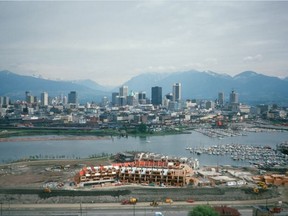Opinion: Vancouver needs a different type of housing — starting on public land
Opinion: In Metro Vancouver, at least 70 per cent of all new rental supply built over the next 20 years must be non-market if there’s any hope of putting a dent in the housing crisis

Article content
The barrage of housing announcements so far in 2024 has been refreshing. It shows the province of B.C. and Ottawa are firmly committed to addressing housing unaffordability, especially in rental markets — like Vancouver’s — where their support is most needed.
But there needs to be a higher priority on the part of governments to build rent-geared-to-income non-profit housing, including co-ops and non-profit rentals.
Why is much more non-profit housing needed? Because median rental rates for one-bedroom units in Vancouver ($2,700 a month) are unsustainable for half of the city’s population, whose annual household income is less than the approximately $97,000 necessary to service that amount of rent without paying more than 30 per cent of gross income to housing. For two- or three-bedroom units in Vancouver ($3,700 a month and $4,880 a month), yearly incomes must be in the range of $133,000 to $175,000.
Non-profit housing liberates housing from keeping pace with market increases. Yet it makes up only 3.5 per cent of housing in Canada, which is among the lowest among G7 countries. In comparison, market-rate housing gets more expensive in tandem with inflation.
The beauty of non-profit housing is that it supports housing that can be not only lower than market rate but also gives security of tenure, while generating revenue for municipalities and the province and operating long-term sustainable housing.
In Metro Vancouver, at least 70 per cent of all new rental supply that is built over the next 20 years must be non-market if there’s any hope of putting a dent in the housing crisis, according to the Vancity Community Foundation.
But imagine if we were to go further and use public land only for non-profit housing in all its forms, especially co-ops, as a way to provide real affordability to mainly low- and middle-income households.
Not doing so has contributed to a very scary reality: Many young families, single-parent families, seniors and low- and middle-income households in Vancouver are going to be priced out of living in this city should they lose their current rental housing.
What’s to be done?
We need to fundamentally change the way we think about housing and we need to specify housing types in density conversations and policies. We need to adjust our mindsets and advocate for non-profit housing, especially on public land — and that’s exactly what the city of Vancouver committed to do last month.
The city of Vancouver plans to prioritize building new co-ops — a form of non-profit housing — on vacant city-owned land, including in False Creek South. False Creek South is an example of a community where more than 50 per cent of the 3,800 residents who live on city-owned land reside in non-profit housing. Built in the 1970s with federal and provincial funding, this neighbourhood continues to be unlike any other in Vancouver because of the residents’ mix of income and housing tenures that has endured for almost 50 years.
In False Creek South, the existing co-ops and non-profits have some of the deepest affordability anywhere in the city — and that can be safeguarded for decades more while new non-profit housing is added on vacant land. But that requires the city to extend the existing land leases — and that has yet to happen.
A commitment to preserve affordable non-profit housing for decades, in places like False Creek South, would demonstrate the city’s commitment not to prematurely demolish safe and secure housing — a stance that both the province and Ottawa support through their rental protection funds. These are new tools that facilitate the community housing sector to preserve older rental buildings with permanently affordable rents, and that ensure the long-term security of tenure for existing tenants.
In False Creek South, we’re excited to grow and to use public land to build co-op and other forms of truly affordable non-market housing. Another type of this housing could be individual affordable home ownership (AHO) that exists elsewhere on public land. Like co-ops, these housing types decrease in price as the years pass and are also a foundation for strong communities where people can genuinely afford to live.
Considering housing from this perspective, should any unaffordable housing be built on public land — or can we agree that non-profit housing is the best way to go for affordability, sustainability and livability?
Nancy Hannum is chair of the Co-op Committee of False Creek South Neighbourhood Association’s RePlan Committee.





Postmedia is committed to maintaining a lively but civil forum for discussion. Please keep comments relevant and respectful. Comments may take up to an hour to appear on the site. You will receive an email if there is a reply to your comment, an update to a thread you follow or if a user you follow comments. Visit our Community Guidelines for more information.